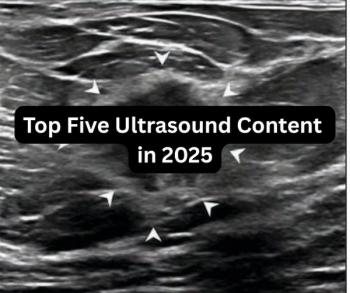
CT Update: FDA Changes Course on Post-ICM Thyroid Monitoring in Young Children
Revising a March 2022 recommendation, the Food and Drug Administration (FDA) said thyroid monitoring for young children three years of age and under receiving iodinated contrast media (ICM) in relation to contrast-enhanced computed tomography (CECT) can now be reserved for those with risk factors including prematurity, low birth weight or conditions affecting thyroid function.
Amending a previous recommendation of thyroid monitoring for all children three and under who received iodinated contrast media (ICM) in relation to contrast-enhanced computed tomography (CECT) and intravascular procedures, the
Jonathan R. Dillman, M.D., MSc,
In a
Most of the cited studies focused on high-risk pediatric patients ranging from neonates to those suffering from congenital heart disease, pointed out Dr. Dillman, the associate chief of research in the Department of Radiology and the medical director of the Imaging Research Center within the Division of Radiology at the Cincinnati Children’s Hospital Medical Center.
In the April 26, 2023 updated guidance, the FDA recommended that thyroid monitoring after injection of ICM in children three years of age or under “ … be individualized based on each child’s risk factors. These risk factors may include prematurity, very low birth weight, and underlying medical conditions affecting thyroid function.”
“I want to thank the FDA for thoughtfully reconsidering this matter and adopting a more patient-centered and tailored response consistent with scientific evidence presented by ACR experts,” noted Dr. Dillman in a
Newsletter
Stay at the forefront of radiology with the Diagnostic Imaging newsletter, delivering the latest news, clinical insights, and imaging advancements for today’s radiologists.




























